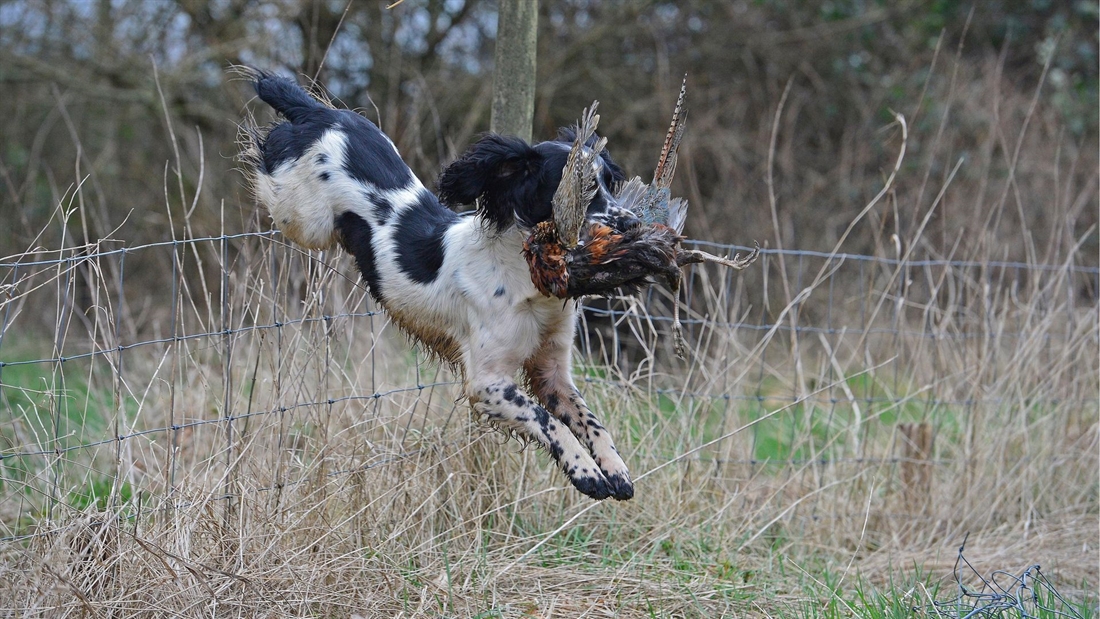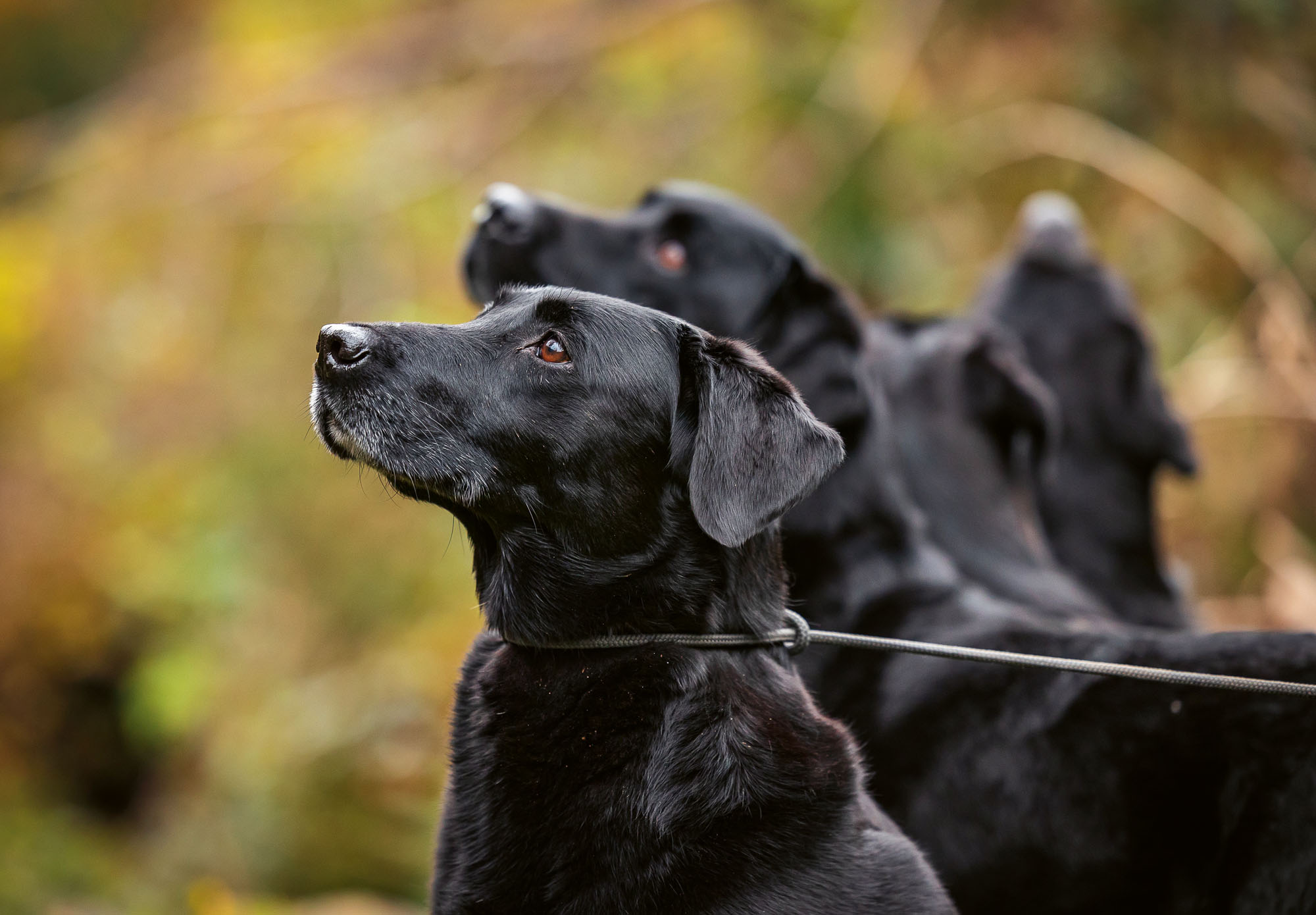Elbow problems in working gundogs

A reluctance from your gundog to obey commands may not necessarily be due to disobedience; Vicky Payne explains how many gundog breeds are commonly affected by elbow problems
Recent data from veterinary practices across the UK suggests that more than 1 in 200 dogs suffer from problems with their elbows. More alarming for the gundog community is that Labradors, golden retrievers, and English
springer spaniels are all in the five most commonly affected breeds.
What are the signs and symptoms of elbow problems in working dogs?
Symptoms include lameness and reluctance to exercise, but highly-driven gundogs may work on despite the pain, and if both elbows are affected lameness can be more difficult to spot. Pain can make dogs grumpy, or to appear stubborn during training, even if lameness isn’t obvious. Dogs with elbow problems may develop a gait where the legs swing outwards as the dog avoids bending the elbow joint, or they may become reluctant to jump in and out of vehicles. Some dogs with elbow pain sit with their elbows turned out from the body, and in others the joint is obviously enlarged. As dogs carry 60% of their weight on their front legs, and this is added to when carrying a heavy cock pheasant, even retrieving issues can be linked to elbow pain. Elbow arthritis was one of the reasons for euthanasia in 40% of the dogs that died during the study.
What causes elbow problems in working dogs?
Although traumatic injuries can result in elbow arthritis, most cases will be due to developmental problems such as Elbow Dysplasia (ED) and Humeral Intracondylar Fissure (HIF). Elbow Dysplasia is a term which covers four different conditions: Fragmented Medial Coronoid Process (FCP), Osteochondritis Dissecans (OCD), Ununited Anconeal Process (UAP) and Medial Compartment Disease. Dogs can have more than one of these problems at the same time.
Your vet may suspect elbow pain based on watching your dog move and manipulating the joints. A position called flexed supination should cause no discomfort in a normal dog, but can be very painful in a dog with ED. The next diagnostic tool normally comes in the form of x-rays, but referral for a CT scan may be required due to the complex 3-D nature of the elbow joint.
Treating elbow pan in working dogs
Affected dogs can often be managed medically with a combination of weight management, controlled exercise, hydrotherapy, joint supplements, and prescription medications. Surgery can help some dogs and can include removal of bone fragments, removal of cartilage flaps, tendon releasing operations, or even surgery to cut the ulna (a bone in the forearm).
What is “elbow scoring” and how does it work?
The risk of Elbow Dysplasia can be reduced by choosing a puppy from parents who have been graded under the KC/BVA Elbow Grading Scheme, where orthopaedic specialists scrutinise two x-rays of each elbow and give an applicable grade. Elbow Grading scores work as below:
- 0 Radiographically normal, but these dogs may have faults which can’t be seen and may still pass poor genetics on to their puppies.
- 1 Mild arthritis.
- 2 Moderate arthritis or a primary lesion with no arthritis yet.
- 3 Severe arthritis or a primary lesion with arthritis.
- Only dogs with a 0 score should be used for breeding, and attention should be paid to the scores of their relatives.
Spaniels have more to worry about when it comes to elbows
Spaniel breeds have an additional elbow problem to be concerned about, but the cause of Humeral Intracondylar Fissure (previously known as Incomplete Ossification of the Humeral Condyle – IOHC) remains unclear despite extensive research. Originally thought to be a developmental abnormality, it is now considered more likely to be a stress fracture. Pedigree analysis suggests that the risk can be inherited, so the current advice is to avoid breeding from affected dogs. HIF can cause mild pain and gait abnormalities, or may go unnoticed until the joint fractures, often due to a very minor trauma. Joints with a fissure can be stabilised with a screw to minimize the chance of a fracture and to reduce pain.
There is no screening scheme available as early signs of HIF are often not visible on plain x-rays, and CT scanning is too expensive for a screening scheme. In addition, some dogs have had normal CT scans and later developed HIF. Medial Coronoid Disease is more common in spaniels with elbow lameness than HIF, so elbow grading is advised in spaniels as well as retrievers.





